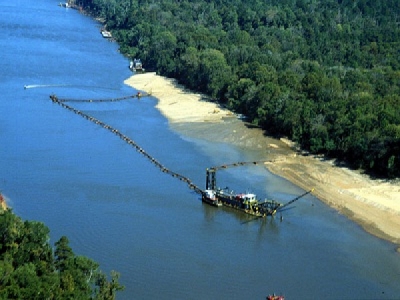
Posted on January 8, 2018
The Alabama State Port Authority (ASPA) and APM Terminals boards of directors in separate actions have approved a $49.5 million expansion of the container facility at the Port of Mobile. The Port Authority and APM Terminals jointly will deliver a Phase 3 expansion that includes a dock extension and an additional 20 acres of improved yard to maintain excess capacity to accommodate new business opportunities. When completed, the project will accommodate an annual throughput capacity of 650,000 TEU.
“The Phase 3 expansion enables us to stay well ahead of the growth pattern we’ve seen in the Port of Mobile, as well as add dock space to support the growing vessel sizes that are coming to the terminal. It will help us maintain the efficiency levels our customers have come to expect, while also creating the extra capacity needed to support potential future economic growth in our market,” said Brian Harold, managing director for APM Terminals Mobile.
The Phase 3 is part of a 5 Phase, long-term plan that can grow the terminal’s annual throughput capacity to 1.5 million TEU (Twenty-foot Equivalent Unit). Under the Phase 3 development, a 400-foot dock extension, super Post-Panamax crane rails and upgrades to the fender system will accommodate 14,000 TEU ships. The 20-acre yard expansion ensures excess capacity at the terminal to accommodate new shipper and carrier business opportunities. The dock extension will take approximately 24 months to complete, while the yard will take 18 months to complete.
When completed, Phase 3 will complement the recently commissioned Phase II investments that delivered 20 acres and installed two new super Post-Panamax cranes to serve new business through the terminal, including containers bound for Walmart’s 2.6 million square foot import distribution center at Mobile, Ala. The project will also compliment the recently completed Intermodal Container Transfer Facility, which is accessible by five Class I railroads, including the Canadian National, CSX, Norfolk Southern, Kansas City Southern and BNSF. Currently, the Canadian National provides container intermodal rail service to key U.S. mid-west and Canadian markets.
“Container intermodal growth continues to drive investment at the Port of Mobile,” said James K. Lyons, chief executive of the Alabama State Port Authority. Since 2005, the Port Authority and its partners have invested $535 million in shore-side and channel improvements to support the larger ships calling the Port of Mobile. “These prior investments have competitively positioned the port and established Mobile as an alternate gateway for U.S. trade. This expansion and our planned harbor deepening and widening program will provide both shippers and carriers with a cost effective, customer service oriented option,” added Lyons. The U.S. Army Corps of Engineers harbor modernization study is underway with a record of decision expected by year-end 2019.
APM Terminals is a leading global port and cargo inland services provider with a presence in 59 countries providing the world’s most geographically balanced global terminal network with 76 operating port and terminal facilities, five new port facilities under construction, and an inland services network spanning 117 operations at 87 locations in 37 countries. Based in The Hague, Netherlands, the company works with shipping lines, importers/exporters, governments, business leaders and the entire global supply chain to provide solutions that help nations achieve their ambitions and businesses reach their performance goals. Learn more at www.apmterminals.com or on Facebook at www.facebook.com/APMTerminals.
The Alabama State Port Authority owns and operates the State of Alabama’s public, deep-water port facilities at the Port of Mobile, currently ranked 10 largest U.S. seaport by volume. The Authority’s container, general cargo and bulk facilities have immediate access to two interstate systems, five Class 1 railroads, and nearly 15,000 miles of inland waterway connections.





